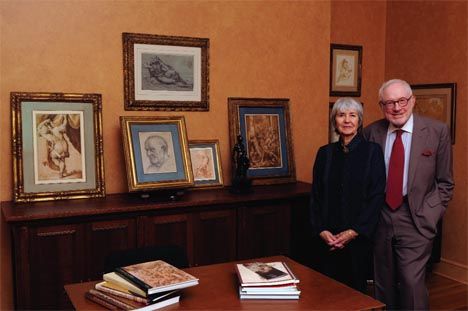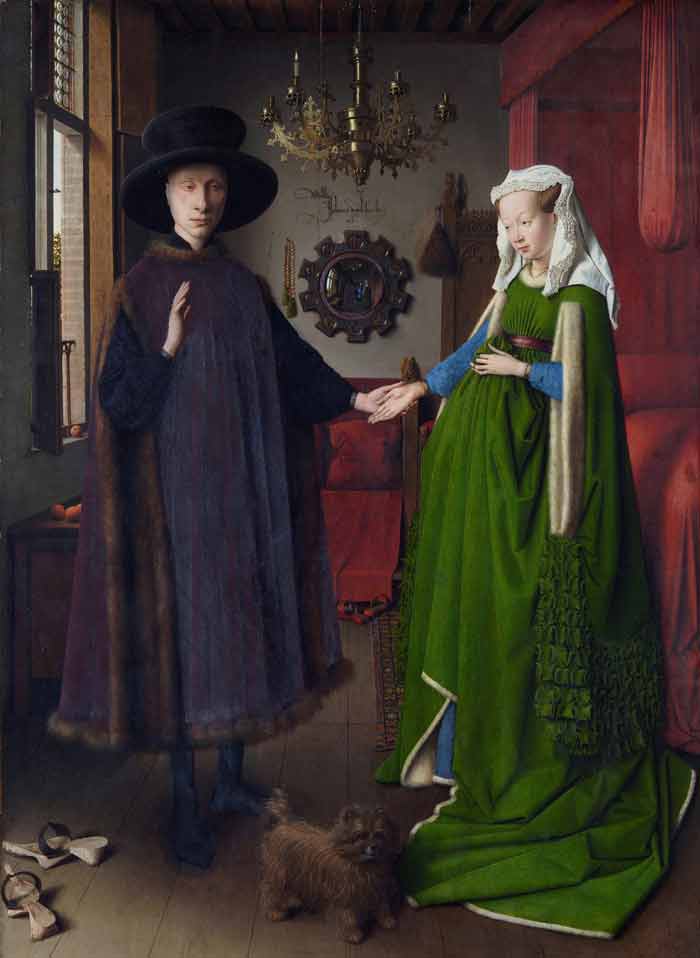On 11 Jun, 2010 With
This chef-d’œuvre of Titian, so celebrated in the history of art, represents Venus endeavoring to detain Adonis from the fatal chase. Titian is known to have made several repetitions of this charming composition, some of them slightly varied, and the copies are almost innumerable. The original is supposed to have been painted at Rome as a companion to the Danaë, for the Farnese family, about 1548, and is now in the royal gallery at Naples. The most famous of the original repetitions is that at Madrid, painted for King Philip II., when prince of Spain, and about the period of his marriage with Queen Mary of England. There is a fine duplicate of this picture in the English National Gallery,…
Read More
On 11 Jun, 2010 With
Richard Gray, who has galleries in Chicago and New York, is donating a substantial portion of his collection to public museums US dealer Richard Gray, who has galleries in Chicago and New York, is donating a substantial portion of his collection to public museums. Predominantly works on paper, his 200-strong collection is rich in early Italian and French old masters, as well as late 19th-century and early 20th-century European and US artists. Nine promised gifts to the Art Institute of Chicago will be officially announced at the opening of its exhibition “Gray Collection: Seven Centuries of Master Drawings” (24 September-2 January 2011). “The bulk of the collection will end up at the Art Institute,” says Gray. “But I have started…
Read More
On 11 Jun, 2010 With
A Brief History of Printmaking from arthistory.about.com In the beginning, before the printing press, printmaking was not considered an art form, rather a medium of communication. It was not till the 18th century that art prints began to be considered originals and not till the 19th that artists began to produce limited editions and to sign their prints along with the technical information necessary to authenticate the work. Engraving goes back to cave art, executed on stones, bones and cave walls. The duplication of engraved images goes back some 3,000 years to the Sumerians who engraved designs on stone cylinder seals. Academics think that the Chinese produced a primitive form of print, the rubbing, as far back as the 2nd…
Read More
On 11 Jun, 2010 With
Actually no, but in 1911, when the Mona Lisa was stolen from the Louvre, the police took in Picasso’s friend, the poet Guillaume Apollinaire. Apollinaire fingered Picasso as a suspect, so the police hauled him in for questioning. Both were later released.
Read More
On 10 Jun, 2010 With
Titian, the great head of the Venetian school, like Raffaelle, the head of the Roman, had a host of imitators and copyists, some of whom approached him so closely as to deceive the best judges; and many works attributed to him, even in the public galleries of Europe, were doubtless executed by them.
Read More
On 10 Jun, 2010 With
HISTORY OF OIL PAINT from arthistory.about.com The oldest Mediterranean civilization, Greek, Roman or Egyptian have extensively used painting techniques based on mixtures of encaustic (probably rich in bee wax), mineral pigments (iron, copper, manganese oxides) and tempera. Vegetal oils, such as flax, walnut or poppyseed oil were known to ancient Egyptians, Greeks or Romans, but no precise indication of their use in painting may be found. Tempera is a fluid mixture of binder (organic medium), water and volatile additives (vegetal essential oils). Organic binders used by Italian artists were proteinaceous materials available from animal sources (whole egg, animal glues or milk). At the end of the roman empire and up to the Renaissance period (15th century), this ancient technique was lost…
Read More
On 9 Jun, 2010 With
There were many colossal statues of Memnon in Egypt, but the most remarkable were the two in the Memnonium or palace of Memnon, at Thebes. The largest is of rose-colored granite, and stood in the centre of the principal court; its height was sixty-four feet, and its remains are scattered forty feet around it. Rigaud, one of the French savans, says, “the excavations are still visible where the wedges were placed which divided the monument when it was thrown down by Cambyses.” The trunk is broke off at the waist, and the upper part lies prostrate on the back; it measures six feet ten inches over the front of the head, and sixty-two feet round the shoulders. At the entrance…
Read More
On 9 Jun, 2010 With
Being a famous artist certainly helped Picasso get the girl. Girls, in fact – many, many girls. Here’s a short list of known wives and lovers of Picasso – Fernande Olivier (Picasso’s first love, she was 18?; he was 23) – Marcelle Humbert AKA Eva Gouel (she was 27, Picasso was 31) – Gaby Lespinasse (he was 34, I don’t know how old Gaby was, but she was young, that’s for sure!) – Olga Khokhlova (Picasso’s first wife; she was 26 and he was 36 when they met) – Marie-Thérèse Walter (she was 17, he was 46) – Dora Maar (she was 29, Picasso was 55) – Françoise Gilot (she was 21 when she met Picasso, who was 61) –…
Read More
On 9 Jun, 2010 With
When thwarted in the Academy (which happened not unfrequently), his wrath aired itself in a polyglott. “It is a pleasant thing, and an advantageous,” said the painter, on one of these occasions, “to be learned. I can speak Greek, Latin, French, English, German, Danish, Dutch, and Spanish, and so let my folly or my fury get vent through eight different avenues.”
Read More
On 8 Jun, 2010 With
In 1909, Picasso and French artist Georges Braque co-founded an art movement known as cubism. Actually, it was a French art critic Louis Vauxcelles who first called it “bizarre cubiques” or cubism, after noting that Picasso and Braque’s paintings are “full of little cubes.”
Read More



